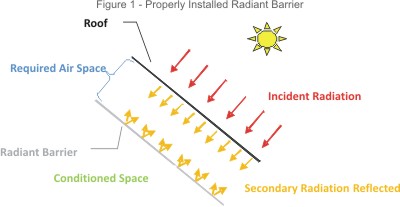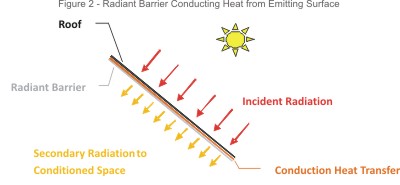
Campfire Stories – Distinguishing Radiation from Other Modes of Heat Transfer
Remember a time sitting around the campfire and telling ghost stories on a cool fall night. Nothing is quite like it seems; there are strange noises in the dark and your body starts to shiver…but your face gets warm and the bottom of your shoes start to melt. The heat your face is experiencing is a result of radiation from the fire. It may also be possible that you’re getting a little forced convection from all of the hot air uncle John is blowing as he attempts another scary story. What can be made of all this?
A Bigger Fire – Making Sense of Saving Energy and Radiation
All objects with temperatures above absolute zero emit electromagnetic waves, or radiation. Radiation is transferred through space (air or a vacuum) from the emitting source to whatever is in its line of sight. Just think about the fire; if someone walks between you and the fire, it starts to feel cold pretty quick. The radiation has been effectively blocked.
In the construction world, radiant barriers are commonly used to block or reflect unwanted radiation from the biggest fire ever, the sun, or other heat sources. They are often touted as a real energy saver, but like most things, they work best in appropriate applications with the right installation.


Commercial and residential construction in cooling (southern) climates, such as an office building in Arizona, may use a radiant barrier to reduce radiant heat load from the sun. In a heating-dominated (northern) climate, all that radiation is something to be relished! This is especially true in shell-dominated buildings, such as low-rise commercial and residential housing.
Proper installation is necessary for an effective barrier. Always remember to:
- Install the radiant barrier as perpendicular as possible to the radiant source.
- Install the radiant barrier with sufficient air space on the side of the radiation source in order to work effectively. (See Figure 1)
The air space is required to minimize the effects of conduction heat transfer. Conduction will occur if the radiant barrier is in contact with the radiation-emitting source, in this case, the roof. If the barrier is in contact, the radiant barrier will conduct heat and emit more of the incident solar energy to the space, thereby rendering itself less effective. (See Figure 2)
In Conclusion
Understanding how radiation behaves will help control it. It may be beneficial to actually remove your gloves if you are trying to warm up quickly in front of a campfire, or you may want to stand in the shade to avoid being cooked like a s’more on a hot summer day.




